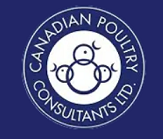
The obvious purpose of a hatching egg is to produce a healthy broiler chick or poult. Unfortunately, many factors and variables influence the success of production. The quality of the chick is determined by how the egg is collected, cleaned, and stored. Bypracticing proper egg handling you will help to ensure excellent hatchability and quality.An important factor when considering egg quality is the shell. The shell of an egg is not a solid structure. It contains pores that allow oxygen to enter and carbondioxide and water to exit during the embryonic stage. Although these pores allow the embryo to breathe, they also can bring about bacterial contamination. This contamination may be carried to the embryo, to other chicks during hatch, and even to the grow-out farm.Contamination occurs when there is a temperature difference between the egg and its environment. When an egg is laid it has a temperature of 41-42oC and immediately begins to cool to the environment temperature. This cooling effect causes the eggto contract, which in turn pulls bacteria surrounding the egg into the membranes. Fortunately, eggs have a defense mechanism that can fight against most, but not all, types of contamination. Reducing the consistency and degree of contamination can easily be done by following our guide to proper egg handling.
Collection
Eggs should be gathered frequently so that they can be cooled to the correct temperature. Frequent collection also aids in decreasing the risk of cracked eggs. Four to six collections daily is ideal, while two collections per day is a minimum. It is also important to remember that when the environmental temperature rises, it is suggested to collect the eggs more frequently to ensure proper cool down.Sanitation is a very important factor when collecting eggs. People in contact with eggs should wash and sanitize their hands constantly. It is also recommended to adequately sanitize the plastic egg trays. Excessively dirty eggs should be discarded, or they may contaminate other eggs.
Floor Eggs
Floor eggs are a costly expense and generally not recommended for hatching egg use. Eggs laid in litter or on slats are usually dirty and/or cracked. These eggs should be discarded. If floor eggs are gathered regularly and are clean and not cracked, they can be shipped to the hatchery. However, they should not be washed or brushed to remove contamination, as this will damage the eggs’ natural outer protective cuticle.
StorageT
he room in which eggs are stored should be cleaned, disinfected, fumigated, and be able to provide continuous air movement. There should also be temperature and humidity controls. It is recommended to hold eggs for no longer than one week. The longer that eggs are held prior to incubation, the longer the hatch time, and the greater the loss in weight. To help reduce these effects, it becomes necessary to lower the temperature of the eggs by lowering the storage temperature.Sweating is a very large problem, and will become increasingly more difficult to control when there are increases in the environmental temperature. Sweating occurs when moisture condenses on eggs while they are transferred from the cool holding room into the warm air outside. Condensation develops when there is a positive difference in air temperature, such as that between the holding room and the outside temperature. The warmer the weather the higher the chance of ‘sweating’ in eggs. The presence of moisture on theegg’s surface provides an optimum
opportunity for bacterial contamination of the egg via the pores. During the summer, it is recommended to pre-warm your eggs 4-6 hours before shipping. This includes increasing the temperature of the storage room approximately half a degree before taking the eggs out and keeping a relative humidity of 75% to assist in preventing sweating.Conditions at which eggs will sweat are shown in the table below:
The quality of the hatching egg is dependant on many different factors. By using effective management techniques and proper handling, the quality of the hatching egg will increase, which in turn will have a long lasting effect on the quality of the broiler.









